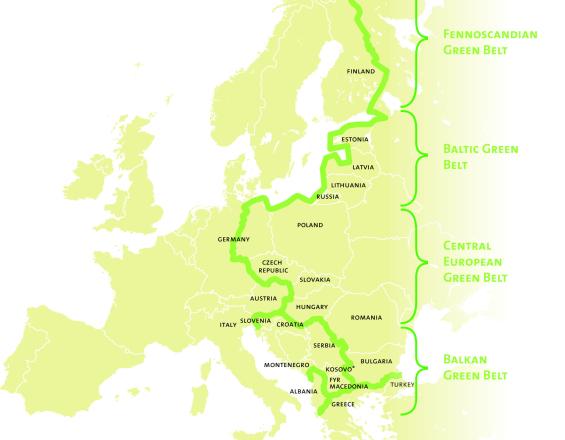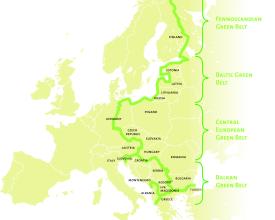Colaboración transfronteriza en la Iniciativa Europea del Cinturón Verde
Solución instantánea

Mapa Cinturón Verde © European Green Belt Association
El Cinturón Verde Europeo conecta 24 países e incluye una amplia gama de paisajes, desde bosques hasta hábitats costeros. La Iniciativa del Cinturón Verde Europeo es un proyecto de colaboración transfronteriza en el que participan cerca de 150 organizaciones gubernamentales y no gubernamentales, empresas e instituciones científicas, con el objetivo común de conservar la biodiversidad, apoyar a las comunidades locales y ayudar a la gestión de los recursos naturales.
Última actualización: 29 Mar 2019
4195 Vistas
Contexto
Défis à relever
Ubicación
Europa
Europa Occidental y del Sur
Norte de Europa
Europa del Este
Impactos
- En 2012 se dieron pasos pioneros para establecer una estructura de gobernanza sostenible con la creación del "Grupo de Coordinación", cuyo objetivo era desarrollar la Iniciativa Europea del Cinturón Verde, organizar conferencias paneuropeas sobre el Cinturón Verde y supervisar la comunicación. Este proceso desembocó en la creación oficial de la Asociación Europea del Cinturón Verde e.V. en febrero de 2015. - A pesar de las marcadas diferencias entre las cuatro secciones incluidas en la iniciativa: las regiones del Cinturón Verde de Fenoscandia, el Báltico, Europa Central y los Balcanes, y de que el Cinturón Verde se extiende a menudo a lo largo de antiguas zonas fronterizas, este proyecto ha sido capaz de trabajar con países que tienen historias políticamente delicadas hacia un objetivo de conservación compartido. - A través de la iniciativa, existen programas de educación medioambiental, patrimonio cultural e integración social. Por ejemplo, en el Cinturón Verde de Fennoscandia existe una amplia cooperación y colaboración transfronteriza de parque a parque por parte de organizaciones científicas, que cuentan con el apoyo de decisiones políticas a nivel gubernamental.
